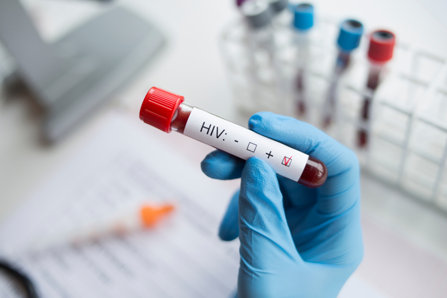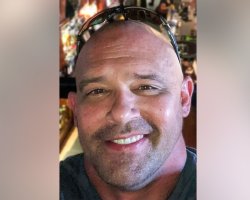HIV Outbreaks, Opioid Misuse, and Small Town America

When we hear the words, “HIV outbreak,” odds are we think of Africa, or maybe the United States in the early to mid-1990s. Even if we consider an “HIV outbreak” as occurring on American soil, we instantly assume cloud-shrouded high rises, a sprawling urban metropolis and downtrodden poor neighborhoods tucked back into the industrial districts.
We would never consider an HIV outbreak in small-town America. But that’s precisely what happened in rural Austin, Indiana, a manufacturing town of about 4,200 people. The city faced its own epidemic of HIV. And how did the disease begin? Intravenous drug use in Austin and the sharing of needles, one drug user to the next.
The Story of the Outbreak
February 2015. Frozen ground. Barren trees. Snow everywhere. Bitter cold. That was the setting in Austin, Indiana when 26 confirmed cases of positive HIV tests came out of a town with a population of only 4,200. And where were the positive tests coming from? They came from Austin residents who had been sharing needles to experiment with opioid painkillers.
Fast forward to mid-spring, usually a time of pleasant optimism and cheerfulness in Midwestern manufacturing and farming towns. But not so in Austin. By May 2015, the number of positive HIV tests in Austin had increased by almost 600% to 153 cases. And as the relief efforts were slow to form, another 50+ residents fell prey to HIV in the following months.
In just a few months, more people in Austin had fallen prey to HIV than the total number of HIV cases in the entirety of New York City in 2014. The former director of the Centers for Disease Control and Prevention, Dr. Tom Frieden, said that the incidence of HIV in Austin was higher than, “Any country in sub-Saharan Africa.” Dr. Frieden also mentioned that the outbreak was a crisis which affected 5% of the total population of the city of Austin.
Local and state efforts to curb the outbreak were slow to form. Only five volunteer HIV testers from agencies across Indiana came to the beleaguered city. Austin’s one doctor was overwhelmed. Critics insisted that Indiana’s Governor Mike Pence (now the current Vice President) took too long to declare an executive order of public health emergency.
The outbreak in Austin was an excellent example of what happens when a health crisis begins to fester unchecked and when the crisis reaches terminal velocity, the rest of the state is slow to respond.
Could the Outbreak Have Been Prevented?

Since 2015, several experts have come forward to say that the HIV outbreak in Austin, Indiana could have been prevented. I for one agree. When you take a town like Austin and put into it poverty, addiction, despair, a severe lack of access to health care, and easy access to opioids, you have the ingredients for HIV to spread.
Times had been harsh in Austin for decades. The working-class, Midwestern manufacturing town had lost its biggest employer, the “American Can” plant in 1986. Since then, the dwindling spiral of poverty was slow to set in, but it had almost thirty years to do so. By 2015, Austin had become quite impoverished. First came drug use, then came hepatitis C, then HIV. The town had one doctor and no addiction treatment. Even the nearby Planned Parenthood had to close its doors due to scarce funding from the government.
All of these phenomena occurring in Austin were known. And the simple truth that these phenomena are what precipitate HIV was also recognized. Austin’s situation was known on local, county, and state levels, even before the HIV increases broke out. Yet nothing was done to prevent HIV. What can we learn from that?
HIV/AIDS Is Just One Piece of the Puzzle
As a side note, let’s bear in mind that HIV/AIDS is not the only health problem that comes about from drug abuse. It is only one of many health risks that manifests when someone starts abusing drugs and alcohol. The best route? Total sobriety and abstinence from drugs and alcohol.
The Centers for Disease Control and Prevention Affords Us a Closing Statement
To learn more about the problem in Austin, Indiana from a professional, medical perspective, I turned to the Centers for Disease Control and Prevention. The CDC is the leading medical organization in the U.S. charged with protecting the health of the American people. The CDC’s report on the 2015 HIV outbreak was brief, but the following quote is notable: “This HIV outbreak involves a rural population, historically at low risk for HIV, in which HIV infection spread rapidly within a large network of persons who injected prescription opioids. The outbreak points to the need for expanded mental health and substance use treatment programs in medically underserved rural areas.”
Before 2015, it seemed impossible, or at least highly unlikely, that a small town in Southern Indiana would become ground zero for the worst HIV crisis in the U.S. in recent history. But it was all because of opiate addiction. Let’s keep that point in mind. This small town would never have struggled with HIV if they weren’t already struggling with a potent opioid crisis.
Going forward, we have to do a better job of preparing ourselves for HIV outbreaks like these. We need real emergency response resources. On an individual and household basis, it’s our responsibility to do everything we can to prevent the spread of HIV. This comes down to safe and ethical sexual practices and no intravenous drug use. HIV.gov has some excellent information on this.
But the underlying problem is the opioid epidemic. As bad as HIV is, it’s almost exclusively just a byproduct of the opioid crisis and other drug issues. The solution? Addiction treatment for those who struggle with an opiate habit.
As a final note, according to the Courier Journal, 220 other counties in the United States have similar conditions to Austin when HIV first broke out there. These are at-risk counties. Fifty-four of them are in the state of Kentucky alone. Not only do we need to be particularly cautious going forward, but we have to take action to ensure that these counties are helped and directed away from such risk.
Sources:
- https://www.courier-journal.com/hiv-outbreak-what-we-know-austins-struggle-drugs/
- https://www.cdc.gov/mmwr/preview/mmwrhtml/


 ®
®